By Patrick Colbeck
We are all familiar with the script…
Votescam (1992) by Jim and Ken Collier
- A candidate is ahead, the good guy, the one who wanted the city audit, the one who’ll make a difference
- Television announcement: “The computer has broken down at the courthouse and official votes will no longer be forthcoming”
- When the computer comes back, your guy is behind again, and there he or she remains.
If you live in Michigan, this scenario immediately fosters visions of the City of Detroit. In Michigan, “the good guy” in statewide races always seems to be in the lead when people go to bed. When they wake up in the morning, they find out that the “bad guy” won…on the back of late votes cast in Detroit. Detroit always seems to be the last municipality to report their votes. Why is that?
But Detroit Is Different
During the 1950’s, Detroit was “different” in a good way. Detroit was the richest city in America and perhaps even in the world. During the 2020’s, the Detroit Metro area has fallen to 92nd in per capita income.
The uniqueness of Detroit, however, goes much deeper than its economic fortunes. As the largest city in the State of Michigan, they also have the largest number of voter precincts. The large number of precincts is often used as an excuse for Detroit to take much longer to report its election results than other municipalities. Is that reasonable, though?
During the 2020 election, there were 503 precincts in Detroit. This is indeed a large number of precincts, but it begs the question, is it really that much more difficult to add the vote tallies from 503 precincts than 50 or 100 precincts found in other communities in the age of electronic voting systems? While Detroit may have a larger number of precincts, the size of the precincts in Detroit are the same as the size of other precincts throughout the state. By law, the maximum number of voters per precinct is 2,999. By law, the election results are supposed to be reported by precinct. So, the process of tallying the vote is fundamentally a precinct operation.
In this light, the core process of tallying the vote in Detroit should take no longer than it takes to tally the votes in other municipalities. Yet it does. In fact, almost three years after the 2020 general election, the City of Detroit still has no apparent idea how many votes were cast by precinct during that election.
There are 506,305 voters eligible to vote in Detroit per the 2020 statement of votes. According to official results reported by the City of Detroit, 257,619 ballots were cast.
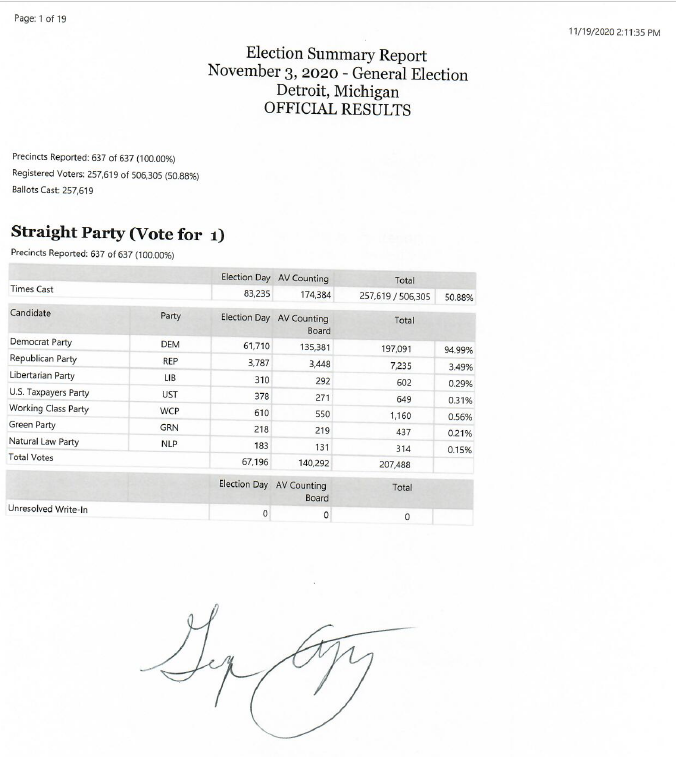
83,235 of those eligible to vote (16.4%) voted at the polls on election day. More than twice that amount voted absentee. 174,384 (34.4%) voted absentee for a cumulative 50.8% voter turnout. As the largest city in the State of Michigan, any errors or deliberate subversion of the integrity of the election processes in Detroit have the potential to subvert the integrity of the election results across the entire state. For this reason if not for the sake of election integrity itself, it is imperative that elections in Detroit are transparent and beyond reproach.
Are they? Let’s find out.
How are votes tallied in Detroit?
During the night of November 3, 2020, that was the question that I asked Chris Thomas, the former State Elections Director and current Senior Advisor to the Detroit City Clerk Janice Winfrey. “How are the votes tallied in Detroit?” He told me he would find out. He never did despite repeated inquiries. Since November 3, 2020, I have continued in my inquiries regarding the very important topic of vote tallies. Here is what I have been able to find out.
Each in-person polling location features a Dominion ImageCast Precinct (ICP) tabulator for each precinct as well as a ImageCastX (ICX) tabulator for handicapped individuals. Rather than tally absentee votes at tabulators in these polling locations, Detroit, along with many other larger municipalities in the state of Michigan have opted to create Absentee Vote Counting Boards (AVCBs). In Detroit, the Huntington Place (formerly TCF Center) serves as a central location for these AVCBs.
The number of AVCB’s in Detroit fluctuates significantly election to election. During the 2020 election, there were 134 AVCB’s. During the 2022 election, there were 147 AVCB’s. Each of Detroit’s precincts are assigned to an AVCB. Each AVCB typically features between 3 and 5 precincts. To complicate traceability to the basic reporting block for elections (i.e. precincts), sets of AVCB’s are assigned to a unique high speed tabulators known as ImageCast Central (ICC) tabulators. There were 25 such tabulators deployed during the 2020 election. So, in order to understand the vote tally by precinct, one needs to be able to track the results for each ballot as it moves from each counting board. These ballots are ostensibly organized into precinct-specific batches delivered to each ICC tabulator. So observers need to know which precinct is being tabulated in each batch sent to each ICC tabulator. This is further complicated by the need to remember that there are multiple AVCB’s assigned to a single ICC tabulator. Poll challengers and canvassers alike are indeed challenged to track the journey of the precinct-specific ballot along this path. But it gets worse as the following diagram attempts to illustrate.

Once the ballots have been scanned by the ICC tabulators, any ballots for which voter intent could not be determined are routed to one of 12 adjudicator workstations. According to Detroit election officials, the assignment of adjudicator workstation is a random process. The only indicator of to which precinct a ballot belongs at this point is a field on the adjudicator workstation display that needs to be read from a distance of at least six feet due to “emergency COVID” restrictions. Once a ballot has been “adjudicated” the vote tally from the ICC tabulator is adjusted accordingly. But wait, there’s more.
The ICC tabulator and adjudicator vote tallies are then transferred to what is referred to as a Results Transfer Manager (RTM) laptop connected to the ICC tabulators and adjudicator workstations via an ethernet connection. The RTM laptop is where all of the absentee votes are ostensibly tabulated.
The next step is to marry the absentee votes residing on the RTM laptop with the in-person votes residing on the ICP machines at the precincts. According to the Dominion contract with the State of Michigan, the aggregation of in-person and absentee votes is performed by what is referred to as the Election Management System (EMS) workstation. You may wonder how all of the ICP results are transferred to the EMS workstation. Once again, according to the contract between Dominion Voting Systems and the State of Michigan, the results are transferred via the internet. Detroit election officials repeatedly asserted that the machines at the TCF Center were not connected to the internet during the 2020 general election. So, how were the votes actually tallied? In the final analysis, the only tabulation machine that would be able to provide the precinct-level vote totals for Detroit AVCB’s is the EMS workstation.
Okay. You’ve heard my explanation of how votes are tallied during Detroit elections. Now, hear from the “experts” as Detroit election officials attempt to explain the process during a 2022 primary pre-election walk thru.

Key takeaways:
- ImageCast Central (ICC) tabulation results by precinct are supposed to be printed for each tabulator (this was never done)
- ICC tabulator closing tapes are supposed to be posted on walls next to zero tapes (this was never done)
- Precinct-specific results are not available at ICC tabulators because they need to be adjusted to include ballots adjudicated at Adjudication Workstations
- Precinct-specific results are tabulated at the local control center
- Poll challengers have been prohibited from observing activities at the local control center
- There is no chain of custody for election results transferred from ICC tabulators to adjudication workstations to central work station
- There are no precinct-specific results available for absentee ballots
In the interest of further illustrating this last point, I issued a Freedom of Information Act (FOIA) request for precinct-level election results from the City of Detroit. I was provided with the following data.
| 2020 Statement of Votes By Precinct | 2022 Statement of Votes By Precinct |
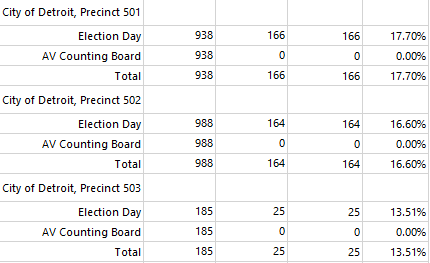 | 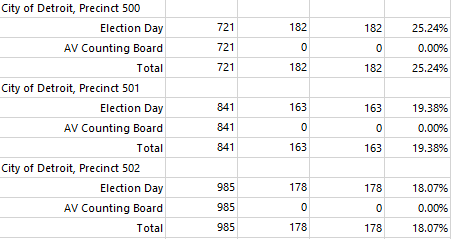 |
One may ask, “where are the AV Counting Board votes for each precinct?” Good question. The answer to this question, however, is not good. Not good at all.
For reference purposes, this is how the statement of votes is supposed to look.
During my testimony before the Michigan State Board of Canvassers during the meeting at which they deliberated on the certification of the 2020 general election, I highlighted the fact that the OFFICIAL precinct-level statement of votes for Detroit featured 0 absentee voters. Clearly, this issue needed to be investigated further.
It wasn’t investigated further. Three out of the four State Board of Canvassers members voted to certify the 2020 general election. Despite this setback, I persisted in my exploration of the vote tally chain of custody in Detroit. In response to my Freedom of Information Act (FOIA) request for precinct-level election results for the absentee ballots, the City of Detroit provided the following data. This is the same information that was provided to the Wayne County and State Boards of Canvassers for certification of the election.
| 2020 Statement of Votes By AVCB | 2022 Statement of Votes By AVCB |
 |  |
What is missing? The number of absentee votes by precinct. When I pressed for precinct-specific vote tallies for absentee ballots, I received the following response:

According to the City of Detroit Department of Elections, it would take SIX MONTHS to determine the precinct-specific vote tallies by ICC tabulator. If this is how long it takes to determine the precinct-level results for absentee voters, how did Detroit submit their statement of votes to the Wayne County Board of Canvassers less than two weeks after the 2020 election (NOTE: Other communities provided these results within 24 hrs)? How were these votes tabulated? If there are truly paper printouts of the precinct-specific results for each tabulator as asserted by Detroit election officials, where are they? All election records are supposed to be retained for at least 22 months under USC Title 52 Section 20701. If that were the case, Detroit election officials should have been able to provide me with copies of such records. That wouldn’t take six months.
The bottom line? In Detroit, the absentee votes are not reported by precinct. They are reported by Absentee Voter Counting Board (AVCB). This is a clear violation of MCL 168.812, but remember, Detroit is different. Being different means that election laws often don’t seem to apply to Detroit.
In this light, how could any election based upon the election results provided by the City of Detroit be trusted at all much less certified?
Vote Tally Trust Walk
Reasons for lack of trust in Detroit election results don’t stop with the lack of precinct-level results I’m sad to say. Clearly, the convoluted vote tally chain of custody implemented by Detroit election officials is very difficult for any poll challenger to observe with any measure of proficiency. Thus, we place a significant amount of trust in the hope that all of these data transfers occurring out of sight of the poll challengers over ethernet and even internet connections are all safe, secure, and completely reliable. But are they?
We are led to believe that all of machines involved in the tabulation of votes have been tested by trusted individuals and organizations, but here is their dirty little secret. The tabulators deployed to tabulate the votes in Detroit on election day are not subject to public accuracy tests. In fact, the adjudicator workstations, RTM laptop and EMS workstation are not subject to any discernible accuracy test. Remember, the EMS workstation is the ONLY tabulator that would have any ability to provide precinct-level vote tallies that include both absentee and in-person votes.
Ballots
We are led to believe that all vote tallies are generated from ballots. In order for a legitimate election to occur, election officials must demonstrate that ballots are managed in a secure manner with a full chain of custody. Failure to secure the ballot chain of custody would enable mail-in ballots to be cast in someone’s name without their knowing. Ballots must be secured such that blank ballots only find their way into the hands of legitimate voters.
So, is there any evidence to suggest that Detroit secures the chain of custody regarding ballots? Let’s find out.
In August 2021, election monitors with the Michigan Citizens for Election Integrity (MC4EI) released a thorough report of their investigations into the 2020 general election. Their report revealed highly suspect “Back Ally Trafficking” and a complete lack of chain of custody for ballots.
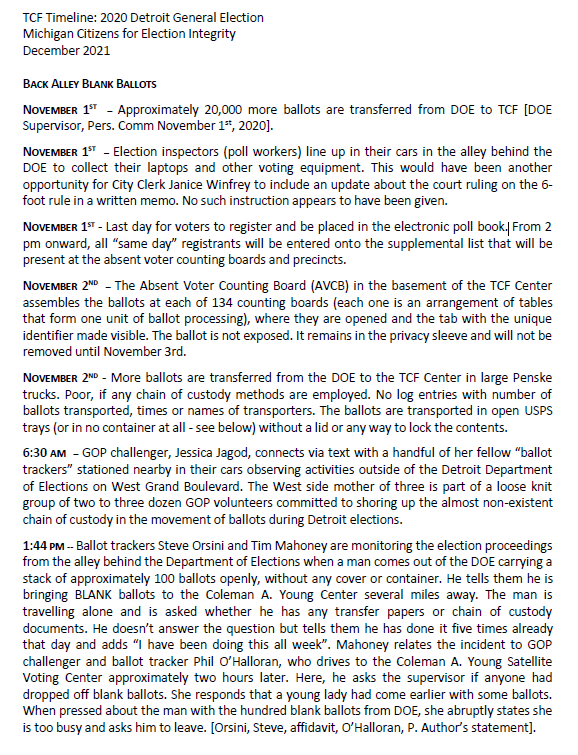 |  |  | 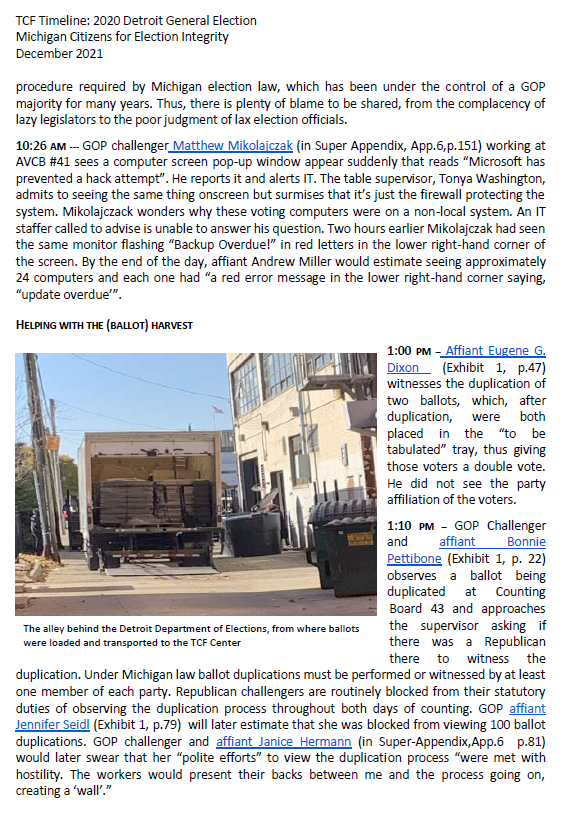 |
See the entire well-documented report prepared by MC4EI below.
The concerns with the chain of custody regarding ballots in Detroit culminated in the revelation of a 3:30am drop of thousands of ballots at the back of the TCF Center during the morning of November 4, 2020. I personally witnessed the drop of these ballots but no one would believe what I and others shared until The Gateway Pundit was able to obtain surveillance video footage validating our assertions.

Under Michigan law, local clerks are required to post the total number of absentee ballots received at 8am on election day and post the final numbers at 9pm on election day.
Once again, though, remember that Detroit is different. Detroit election officials consistently refuse to comply with this law. There is no good reason why absentee ballots cannot be received and delivered to election inspectors by 9pm. There are many bad reasons why this wouldn’t occur, however.
The timing provisions of MCL 168.765 law are designed to prevent the scenario that opened this post. The primary mechanism for executing that scenario is via “late night” ballot drops that routinely occur in Detroit. Polls close at 8pm. Once the polls are closed, election results can be released. Once election results have been released, the general public will know how many votes separate the candidates. Once the number of votes separating the candidates is known, bad actors know how many ballots they need to stuff into the ballot box to win an election. Ballot stuffing takes time, however, if it is to be executed in a manner that mitigates the risk of discovery. That is why bad actors also promote the need for early voting. Early voting provides them with the ability to “smooth out” the ballot dumps to avoid detection. Detroit has 506,305 eligible voters. This large number of voters provides quite the voter “slush fund” for bad actors to use.
Is there reason to doubt the official absentee vote figures provided by Detroit? Yes. At 9:57 p.m. on election night, the Detroit Free Press published an online story entitled “Detroit election officials project Voter turnout highest in 20 to 30 years.” The story features an interview with Detroit City Clerk Janice Winfrey. The clerk is quoted as having said that “80,000 absentee ballots have been counted as of 7:30 p.m. out of a total of roughly 120,000 absentee ballots that were received.” What is interesting about that statement is that, according to the official statement of votes, 174,384 ballots were cast. Where did the extra 54,384 ballots come from between 9:57 p.m. on November 3 and the certification of the vote on November 17?
We are unable to answer that question. Why? There is no chain of custody documentation for these ballots. During a 2022 pre-election walkthru, Detroit election officials confirmed that there was indeed no chain of custody nor any intent to provide a chain of custody in future elections. See for yourself in the following video of the walkthru.
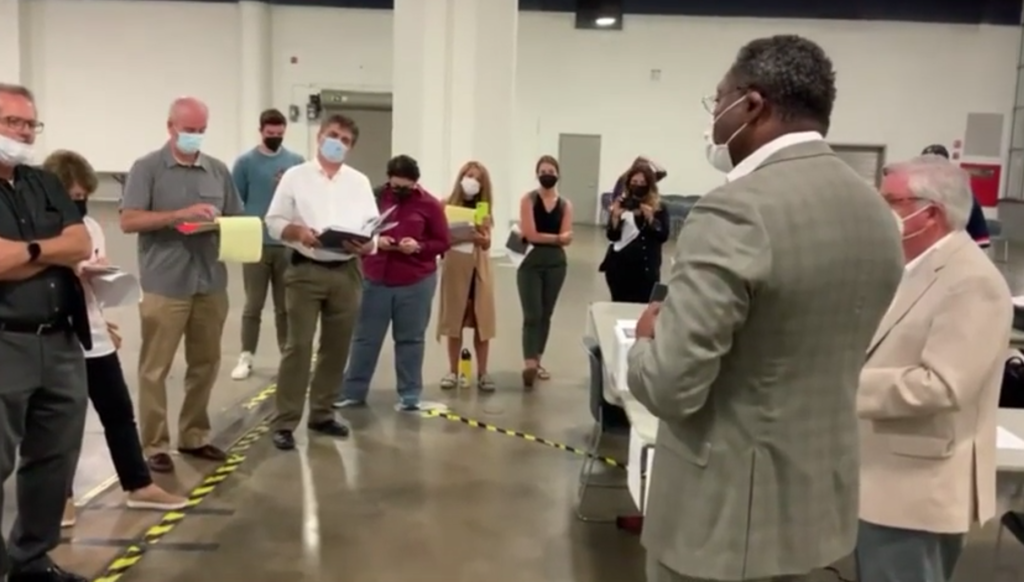
Poll Books
The risks associated with lax chain of custody for ballots would be mitigated to a significant extent if there were disciplined procedures in place to manage the allocation of ballots to voters via poll books. Is that the case in Detroit? Let’s find out.
Poll workers use poll books to determine who gets a ballot and who doesn’t. In order for citizens to have confidence in the results of an election, the number of ballots issued to eligible voters per the poll book should equal the number of ballots cast. If these numbers are not equal, the election records are referred to as “unbalanced”.
In the aftermath of the 2020 general election, 71% of the AVCB’s in Detroit were unbalanced. Even CNN confirms this fact.
Detroit is not off to a good start on this election integrity topic either. Because Detroit does not provide precinct-level vote tallies supported by a cogent audit trail, it is impossible to know how many of their precincts were unbalanced. It would be very interesting to know where CNN received their 42% figure for unbalanced precincts in this light.
I already had evidence that the vote tabulation process in Detroit was suspect so I decided to dig further into the other side of the “balance” discussion – the number of people who voted. Remember how the official 2020 election results reported by the City of Detroit indicated that 257,619 ballots were cast? Well, I issued a FOIA request with the Michigan Secretary of State to find out how many people actually voted in the 2020 general election. It took them eight months to respond to this seemingly straightforward request, but their response indicated a serious discrepancy between the voter history records managed by the State of Michigan and those asserted by the City of Detroit. According to state records, only 171,564 people voted in the City of Detroit. Yet, the City of Detroit said 257,619 people voted in the City of Detroit. In other words, the state records show that 86,055 fewer people cast votes during the 2020 election than the city records show. By law (MCL 168.813), the city is supposed to ensure that the state Qualified Voter File (QVF) voter records are consistent with their own records within seven days of an election. An 86,055 vote difference is significant.
Still not enough evidence that Detroit elections are simply smoke and mirrors?
But wait. There’s more.
Long-time Detroit poll worker Jessy Jacobs was instructed to violate election procedures including the back-dating of ballot receipt dates in poll books for ballots received at the TCF Center on election night. She was so frightened of the repercussions that she resorted to slipping a poll challenger a post-it note.
In response to the allegations made by seasoned poll worker Jacobs, Chris Thomas, Senior Advisor to Detroit City Clerk Janice Winfrey asserted the following:
What Mr. Thomas failed to mention was that when ballots are received into the system, election officials write the date and their initials onto the ballot envelope. So, when these ballots were received at the TCF Center without any such date or initials markings, it indicates that they were not processed by election officials at the clerk’s office as asserted by Thomas.
Then there was the matter of the 1/1/1900 birthdate entry. Poll workers were instructed to manually add thousands of names to the poll books – on election day – using the birthdate of 1/1/1900. Mr. Thomas asserts that it was merely “a placeholder” recommended by the Michigan Secretary of State. This begs the question, “How is a poll worker supposed to validate the eligibility of a voter to cast a ballot if they don’t know their age?”
Once again that pesky thing called “the law” casts a dark shadow on Detroit election practices despite their apparent blessing by the Michigan Secretary of State, Jocelyn Benson (NOTE: Benson has been found guilty of violating Michigan law in five separate court cases). Under the U.S. Constitution, one cannot vote unless they have attained the age of 18 years old. When Chris Thomas or Jocelyn Benson instructs a poll worker to insert the date 1/1/1900 as a placeholder for a voter’s birthday, it means they don’t know their actual birthdate. If they do not know their actual birthdate, they have no way of determining if they are indeed a qualified elector. If they cannot confirm that a voter is eligible to vote, any ballot they cast should not be counted. Period.
And then there is the last minute delivery of “new poll books” to the Wayne County Board of Canvassers, thirteen days AFTER the election.
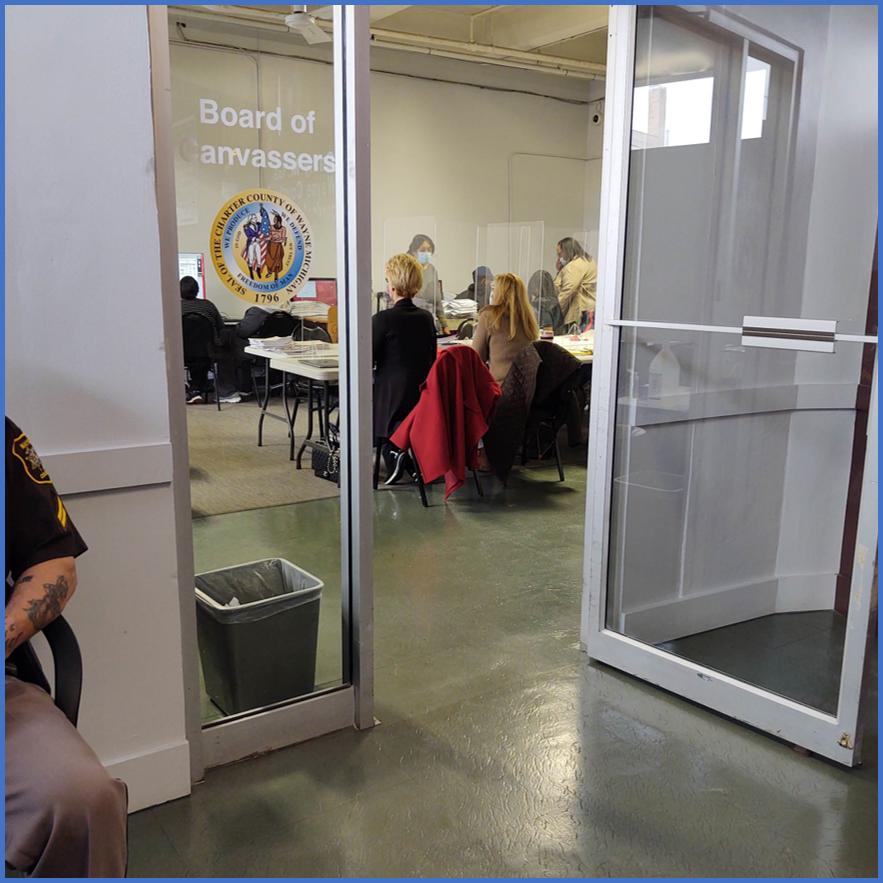 | 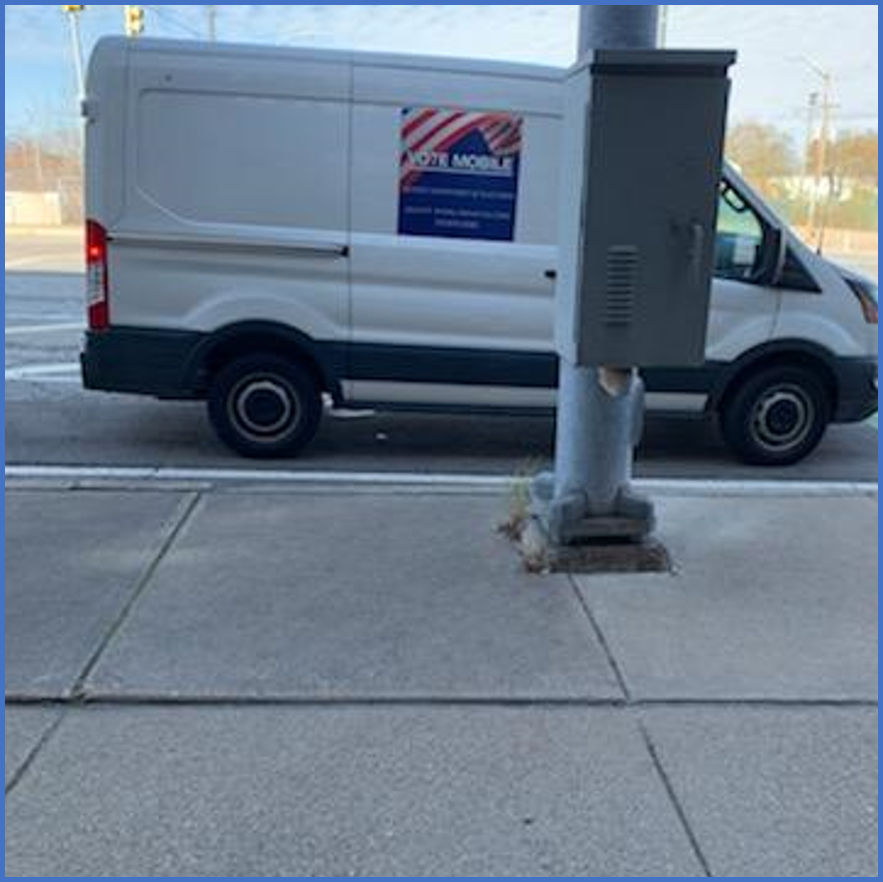 | 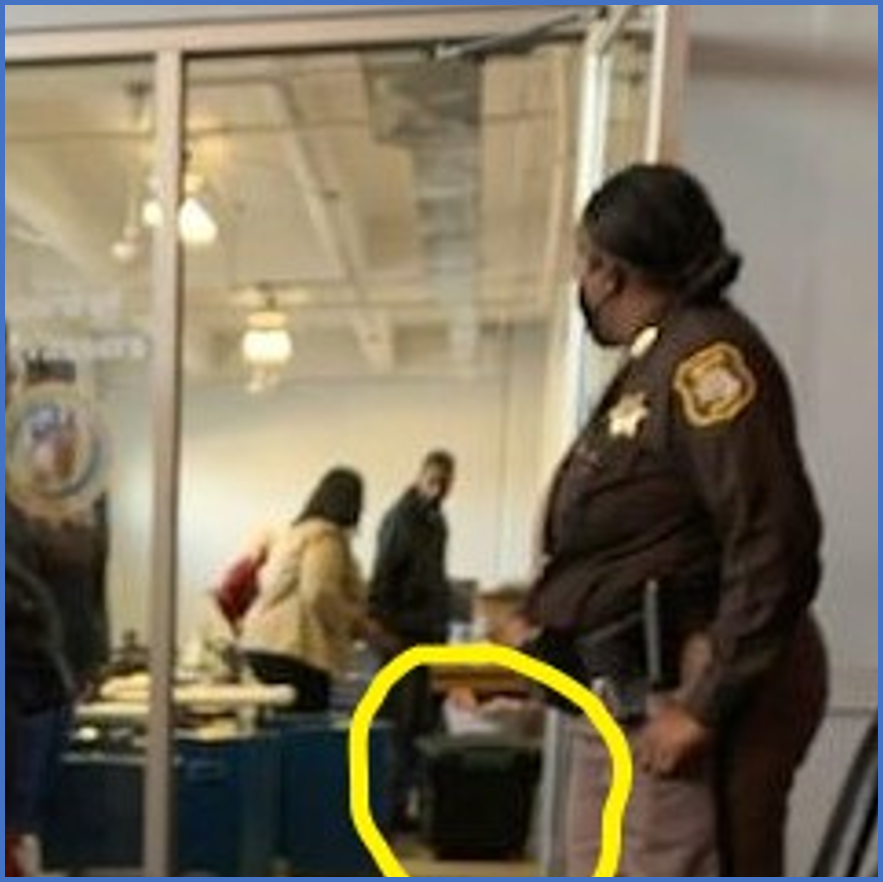 |  |
| •Poll book included vote tallies Canvassers could see counts. •Precincts were unbalanced by as many as 600 ballots. | •“Black Box” arrives 12:30pm at 11/16. •A man in a van labeled “Vote Mobile” from the Detroit Department of Elections delivered a huge rolling black container about 6 feet long, 3 feet high and 2.5 feet wide. Most staff weren’t in the room when this was delivered. | •Contents of black box included new voter lists in manilla envelopes. •Director of Wayne County Elections Greg Mahar states contents of black box were voter lists •Contradicts Daniel Baxter statement telling State Board of Canvasser Norm Shinkle “there were no new voter lists” | •Revised poll books updated to show maximum discrepancy of 29 |
There are numerous other violations of election law as well as election best practices related poll books to cite as well including the deliberate obstruction of poll challengers, the use of multiple poll books rather than a single poll book, and internet connections. The bottom line is that there is significant evidence of malfeasance in the execution of election practices related to poll books to go along with the malfeasance related to ballots and vote tallies.
Primary Issues
In spite of the subversion of election integrity practiced by many Detroit election officials, there are many people of integrity who live and vote in Detroit. The majority of these people are Democrats and a large number of these individuals vote Democrat. So anytime someone investigates election fraud in Detroit, it is classified as a partisan attack. The sad truth of the matter is that Detroit election fraud should not be a partisan issue. It impacts Democrats as well as Republicans and Independents. It impacts general elections and primary elections.
Case in Point is Democrat mayoral candidate Tom Barrow.
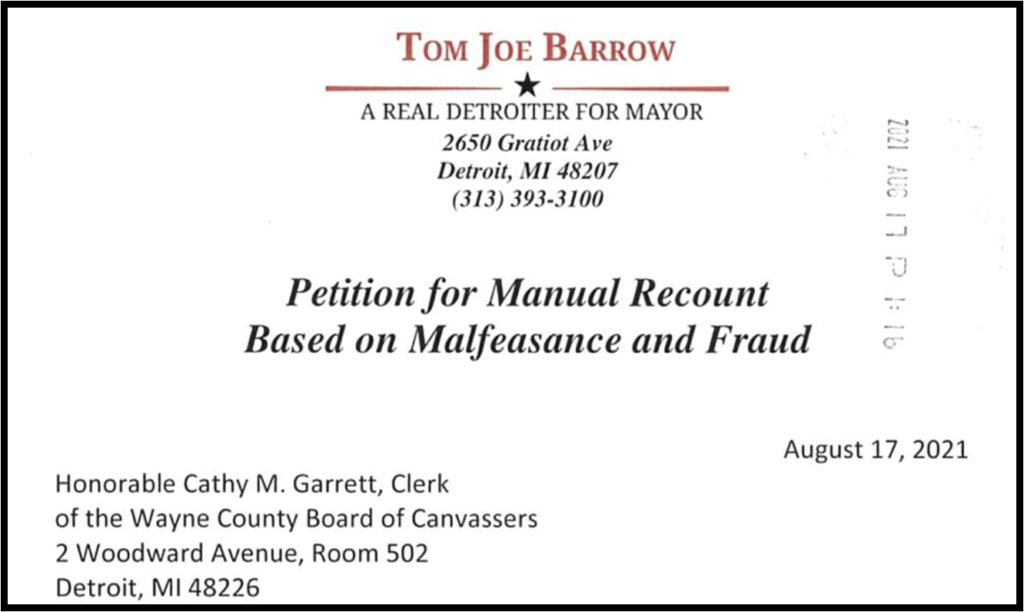
In his complaint, Mr. Barrow cites the following allegations:
- Lack of chain of custody for ballots especially “test ballots”
- Late night deliveries of ballots well after polls had closed
Sound familiar?
Cover-up
The information presented thus far should provide more than sufficient grounds for an investigation of the 2020 election not to mention the 2022 election. Election integrity in Detroit is virtually non-existent. Yet any attempt to express concerns with this observation is immediately attacked as….wait for it….”racist”. Because nothing says racism better than exposing the fact that Detroit election officials consistently issue statements of votes asserting there were zero absentee votes in a precinct despite their need to use an entire converted sports arena to count absentee votes. Think I’m joking? I wish I were. Here’s what happened when the Republican members of the Wayne County Board of Canvassers refused to certify the 2020 general election vote due to vote anomalies in Detroit such as 71% of their AVCB’s being unbalanced.

Talk about “unbalanced”. Ned Stabler is a Vice President at Wayne State University. Abrahim Aiyash is now peddling his racist division as a Democrat Michigan State Representative. On a side note, the public version of the Aiyash portion of the clip was notably cut to remove his “doxxing” of Canvasser Monica Palmer’s daughter during his tirade. I wonder why they might not want the public to see their comments?
Then the media piled on. WDIV featured a news story with a reporter standing in front of the home of canvasser Bill Hartman as they performed an “investigation” of both him and fellow canvasser Monica Palmer. The “investigators” at WDIV didn’t seem interested in investigating why Detroit consistently fails to balance their precincts or why unbalanced precincts were so concerning.
Any wonder why the gross negligence of Detroit election practices has been able to slip under the radar for so many years?
Monica and Bill refused to certify the vote because 71% of the AVCB’s were unbalanced. Because they took a stand to expose this gross negligence or deliberate malfeasance, they were attacked mercilessly.
Monica and Bill had a right to be concerned about the 2020 election results. When a precinct is unbalanced it is not subject to being recounted. This is a very convenient facet of Michigan law to those who respond to claims of election fraud by saying “just count the ballots”. Even if we were allowed to “count the ballots” in these non-recountable precincts, it wouldn’t be allowed to be justification for overturning the election results.
Who Controls Detroit Elections?
The Detroit City Clerk is Janice Winfrey. While she may have overall responsibility for the conduct of elections in Detroit, the following individuals are the ones seen by poll workers and poll challengers on election day.
| Chris Thomas | Daniel Baxter | David Nathan |
 |  | 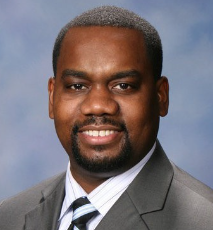 |
Coincidentally, each of these individuals lied to me on November 3, 2020 when they repeatedly asserted that the machines at the TCF Center in Detroit were not connected to the internet. Not only have I, as a Certified Microsoft Small Business Specialist and former Michigan State Senator, refuted this assertion in a signed affidavit, but I also have evidence of internet connectivity from the following footage of the 2020 Pre-Election Walkthru at the TCF Center.
Each of the aforementioned election officials should be asked why they felt it necessary to lie about the machines being connected to the internet. If these Detroit election officials chose to lie about internet connections (which is not even against the law in Michigan), what else are they lying about? That subject is certainly worthy of an investigation by not just the media but also by law enforcement.
Solution
All of the aforementioned issues with Detroit election practices would be resolved going forward with significantly more transparency.

Instead of transparency, all we have gotten so far are pizza boxes on the windows.
Key questions that Detroit election officials should be compelled to answer are:
- Why does Detroit neglect to conduct a public accuracy test for ALL tabulators used on election day as required by law (MCL 168.794a)? The ballot styles vary by precinct. This means that every tabulator needs to be tested to ensure that it is accurately recording votes.
- Why does Detroit neglect to provide the precinct-level results for elections as required by law (MCL 168.812)? Other municipalities do so on election night.
- Why does Detroit neglect to provide an audit trail for their vote tabulation results as required by law (MCL 168.795)?
- Why does Detroit refuse to report absentee ballot counts at 8am and 9pm on election day as required by law (MCL 168.975)?
- Why does Detroit use multiple poll books when they are required by law to have only one (MCL 168.735)?
- Why does Detroit transport ballots using unapproved ballot containers (MCL 168.24j)?
- Does Detroit transfer poll book voter history data to the state QVF within seven days of election as required by law (MCL 168.813)? If so, how?
- Why does Detroit interfere with the conduct of lawful poll challenger duties (MCL 168.733)?
It is not racist to ask such questions. It is logical. Other communities, even large communities, are able to follow the law. Why not Detroit?
The integrity of Detroit elections is non-existent until substantive, lawful and validated answers to these questions have been provided by Detroit election officials.
In light of the evidence provided in this post, it is difficult not to conclude that Detroit election officials are either grossly incompetent or exceedingly corrupt or both.
CONCLUSION
No election should ever be certified unless it has been executed in compliance with election laws that can be demonstrated via an audit trail for all election records tied to the final vote tally.
In Detroit, however, elections continue to be certified despite:
- Failing to subject all vote tabulators or even all tabulator models to public accuracy testing before each election
- Failing to verify the eligibility of voters to vote prior to tabulating votes from ballots submitted by these voters
- Failing to provide precinct-level absentee vote tallies
- Failing to provide any discernible audit trail for vote tallies
- Failing to report their absentee ballot total at 9pm on election night as required by law
In summary, the conduct of elections in the City of Detroit is an abject failure. This failure needs to be addressed in a rational manner free from spurious allegations of racism and partisanship.
Is Detroit the only municipality worthy of scrutiny? No. However, Detroit commands a significant “slush fund” of voters for anyone interested in subverting the integrity of our elections. Detroit is also consistently unlawful, late and negligent in their election result reporting. I believe these facts merit a significant measure of scrutiny. We need law enforcement to engage and secure our rights before these rights are further eroded as a result of fraudulent elections.
It is imperative that Detroit joins other municipalities in the State of Michigan by following the law. Due to the size of its voter base, elections in the City of Detroit have a significant impact upon statewide elections in Michigan as well as national elections. In this light, election integrity in Detroit should not simply be a concern for Detroiters, it is a matter of concern for ALL Americans. The Detroit voter “slush fund” can be used to subvert Detroit, County, State and National elections.
Related Posts
- Who Has Access To Election Records…and Who Doesn’t?
- How Exactly Does Mail-In Ballot Cheating Occur?
- Two Keys to Securing Our Elections
- The Misinformation Disinformation Campaign
- Election Results Are Missing Key Audit Trail Links
- Election Certification Overview
- Beware of “Just Count the Ballots” Narrative
- Vote Tally Audits: Missing Link
- Rigged: Who Gets Access to Electronic Voting Systems?
- Statewide Election Fraud in MI








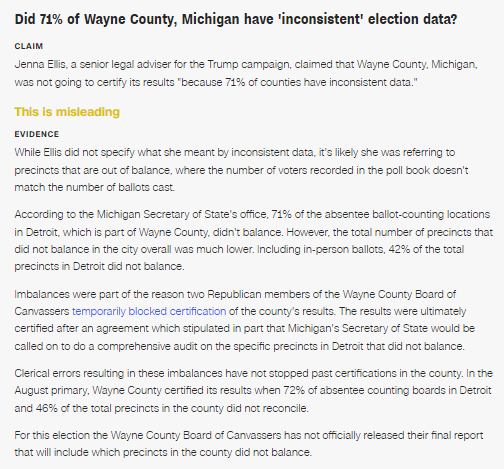
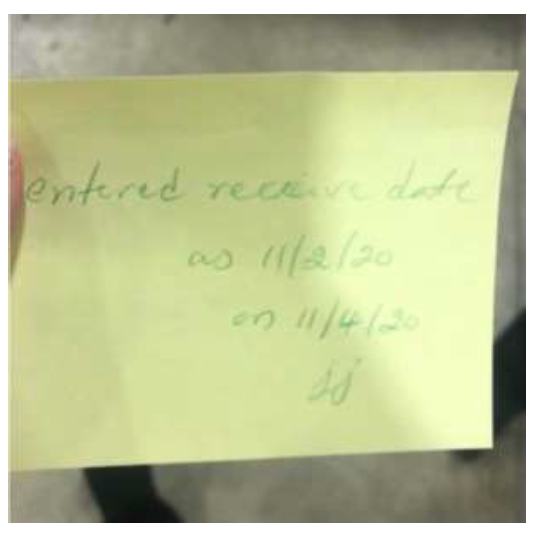

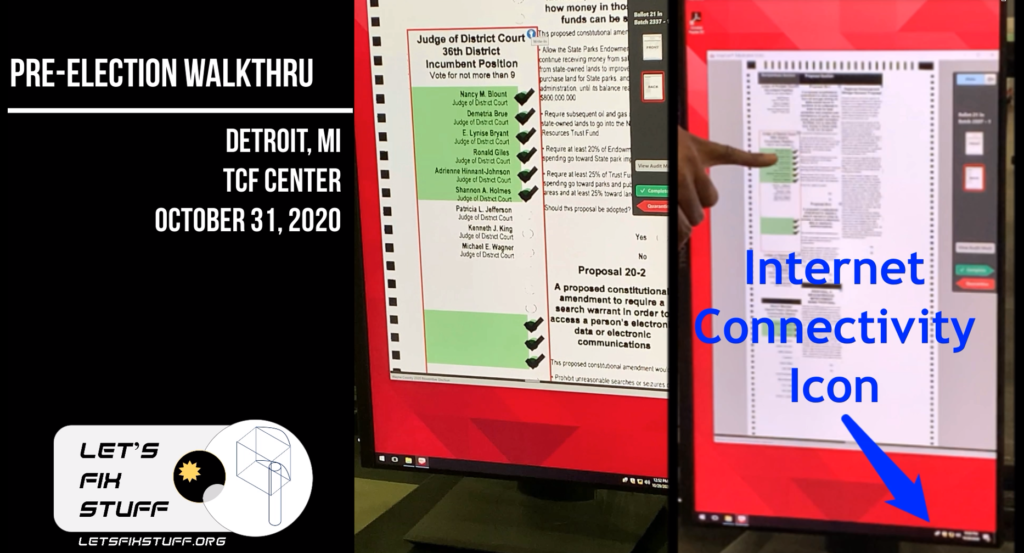
[…] article originally appeared on Let’s Fix Stuff by Patrick Colbeck and was republished with […]
[…] article originally appeared on Let’s Fix Stuff by Patrick Colbeck and was republished with […]
[…] article originally appeared on Let’s Fix Stuff by Patrick Colbeck and was republished with […]
[…] text initially appeared on Let’s Fix Stuff by Patrick Colbeck and was republished with […]
[…] article originally appeared on Let’s Fix Stuff by Patrick Colbeck and was republished with […]
[…] text initially appeared on Let’s Fix Stuff by Patrick Colbeck and was republished with […]
[…] article originally appeared on Let’s Fix Stuff by Patrick Colbeck and was republished with […]
[…] text initially appeared on Let’s Fix Stuff by Patrick Colbeck and was republished with […]
[…] article originally appeared on Let’s Fix Stuff by Patrick Colbeck and was republished with […]
[…] text initially appeared on Let’s Repair Stuff by Patrick Colbeck and was republished with […]
[…] article originally appeared on Let’s Fix Stuff by Patrick Colbeck and was republished with […]
[…] article originally appeared on Let’s Fix Stuff by Patrick Colbeck and was republished with […]
[…] article originally appeared on Let’s Fix Stuff by Patrick Colbeck and was republished with […]
[…] text initially appeared on Let’s Fix Stuff by Patrick Colbeck and was republished with […]
[…] text initially appeared on Let’s Fix Stuff by Patrick Colbeck and was republished with […]
[…] text initially appeared on Let’s Fix Stuff by Patrick Colbeck and was republished with […]
[…] article originally appeared on Let’s Fix Stuff by Patrick Colbeck and was republished with […]
[…] text initially appeared on Let’s Repair Stuff by Patrick Colbeck and was republished with […]
[…] article originally appeared on Let’s Fix Stuff by Patrick Colbeck and was republished with […]
[…] article originally appeared on Let’s Fix Stuff by Patrick Colbeck and was republished with […]
[…] article originally appeared on Let’s Fix Stuff by Patrick Colbeck and was republished with […]
[…] article originally appeared on Let’s Fix Stuff by Patrick Colbeck and was republished with […]
[…] article originally appeared on Let’s Fix Stuff by Patrick Colbeck and was republished with […]
[…] article originally appeared on Let’s Fix Stuff by Patrick Colbeck and was republished with […]
[…] article originally appeared on Let’s Fix Stuff by Patrick Colbeck and was republished with […]
[…] article originally appeared on Let’s Fix Stuff by Patrick Colbeck and was republished with […]
[…] article originally appeared on Let’s Fix Stuff by Patrick Colbeck and was republished with […]
[…] article originally appeared on Let’s Fix Stuff by Patrick Colbeck and was republished with […]
[…] article originally appeared on Let’s Fix Stuff by Patrick Colbeck and was republished with […]
[…] article originally appeared on Let’s Fix Stuff by Patrick Colbeck and was republished with […]
[…] article originally appeared on Let’s Fix Stuff by Patrick Colbeck and was republished with […]
[…] article originally appeared on Let’s Fix Stuff by Patrick Colbeck and was republished with […]
[…] article originally appeared on Let’s Fix Stuff by Patrick Colbeck and was republished with […]
[…] article originally appeared on Let’s Fix Stuff by Patrick Colbeck and was republished with […]
[…] article originally appeared on Let’s Fix Stuff by Patrick Colbeck and was republished with […]
[…] article originally appeared on Let’s Fix Stuff by Patrick Colbeck and was republished with […]
Your style is eloquent and moving, I have been inspired.
[…] Detroit Elections: Smoke and Mirrors […]
[…] DETROIT ELECTIONS…SMOKE/MIRRORS […]
Характеристики приемника ЛИРА РП-248-1
Приемник ЛИРА РП-248-1 основан на супергетеродинном принципе и имеет шесть диапазонов частот, которые позволяют принимать радиосигналы в диапазоне от 0,15 до 30 МГц. Приемник имеет возможность работы в различных режимах, включая АМ, ЧМ, СВ и ДСВ.
Статья подчеркивает важность описания товаров или услуг в объявлениях на доске для привлечения целевой аудитории.
I dugg some of you post as I cerebrated they were very beneficial very useful
Howdy! I simply would like to give an enormous thumbs up for the nice information you have got here on this post. I will be coming back to your weblog for extra soon.